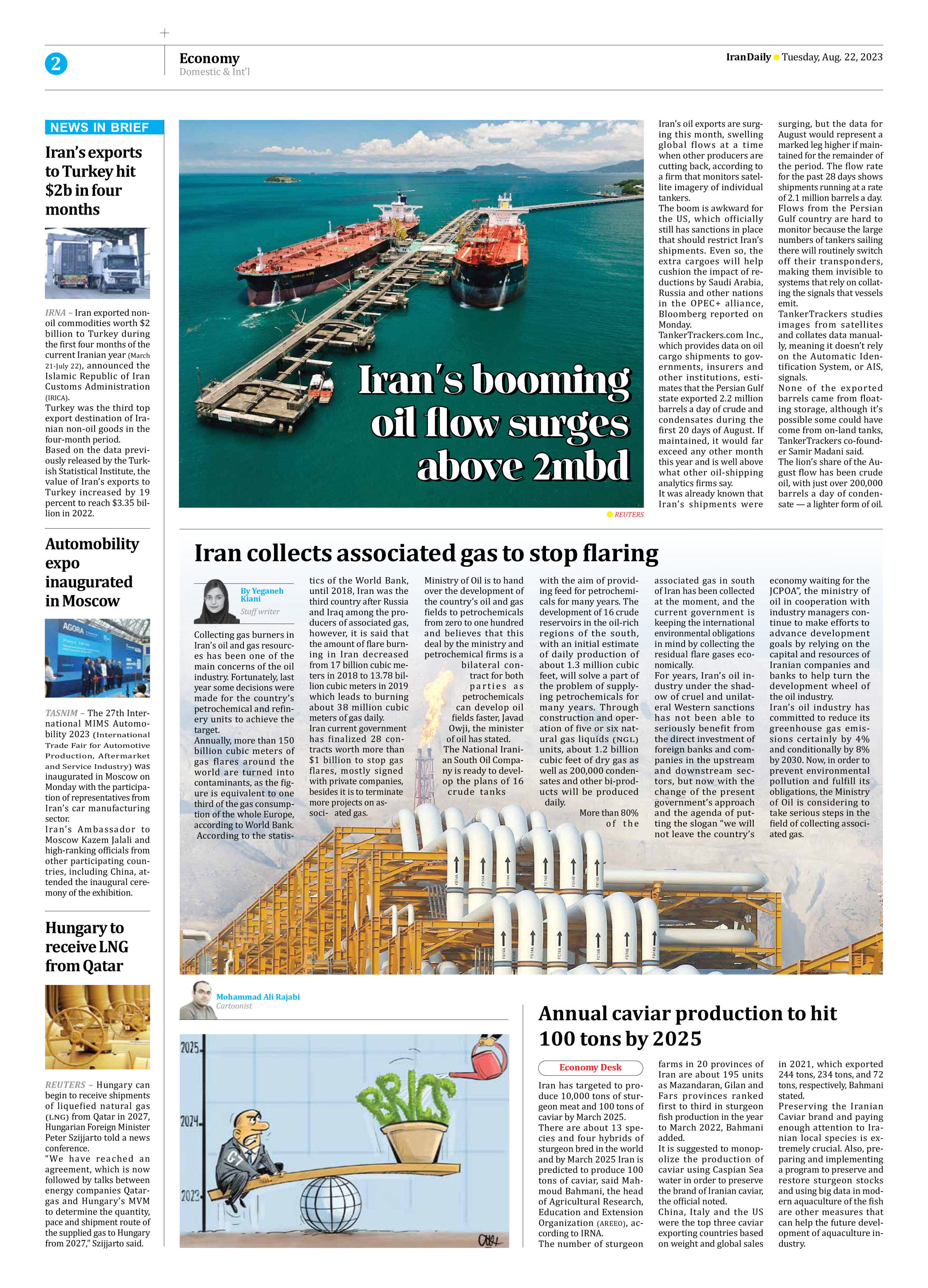
Iran collects associated gas to stop flaring
By Yeganeh Kiani
Staff writer
Collecting gas burners in Iran’s oil and gas resources has been one of the main concerns of the oil industry. Fortunately, last year some decisions were made for the country’s petrochemical and refinery units to achieve the target.
Annually, more than 150 billion cubic meters of gas flares around the world are turned into contaminants, as the figure is equivalent to one third of the gas consumption of the whole Europe, according to World Bank.
According to the statistics of the World Bank, until 2018, Iran was the third country after Russia and Iraq among the producers of associated gas, however, it is said that the amount of flare burning in Iran decreased from 17 billion cubic meters in 2018 to 13.78 billion cubic meters in 2019 which leads to burning about 38 million cubic meters of gas daily.
Iran current government has finalized 28 contracts worth more than $1 billion to stop gas flares, mostly signed with private companies, besides it is to terminate more projects on associated gas.
Ministry of Oil is to hand over the development of the country’s oil and gas fields to petrochemicals from zero to one hundred and believes that this deal by the ministry and petrochemical firms is a bilateral contract for both parties as petrochemicals can develop oil fields faster, Javad Owji, the minister of oil has stated.
The National Iranian South Oil Company is ready to develop the plans of 16 crude tanks with the aim of providing feed for petrochemicals for many years. The development of 16 crude reservoirs in the oil-rich regions of the south, with an initial estimate of daily production of about 1.3 million cubic feet, will solve a part of the problem of supplying petrochemicals for many years. Through construction and operation of five or six natural gas liquids (NGL) units, about 1.2 billion cubic feet of dry gas as well as 200,000 condensates and other bi-products will be produced
daily.
More than 80% of the associated gas in south of Iran has been collected at the moment, and the current government is keeping the international environmental obligations in mind by collecting the residual flare gases economically.
For years, Iran’s oil industry under the shadow of cruel and unilateral Western sanctions has not been able to seriously benefit from the direct investment of foreign banks and companies in the upstream and downstream sectors, but now with the change of the present government’s approach and the agenda of putting the slogan “we will not leave the country’s economy waiting for the JCPOA”, the ministry of oil in cooperation with industry managers continue to make efforts to advance development goals by relying on the capital and resources of Iranian companies and banks to help turn the development wheel of the oil industry.
Iran’s oil industry has committed to reduce its greenhouse gas emissions certainly by 4% and conditionally by 8% by 2030. Now, in order to prevent environmental pollution and fulfill its obligations, the Ministry of Oil is considering to take serious steps in the field of collecting associated gas.







